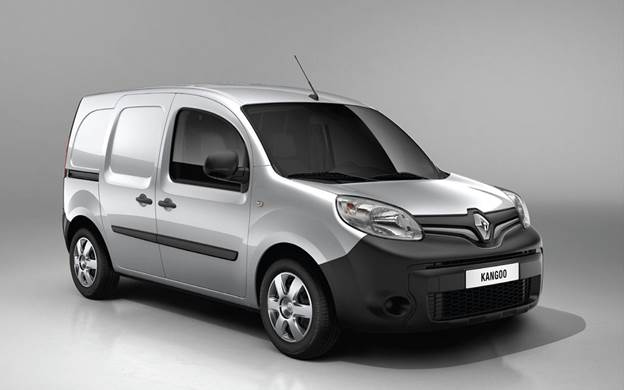While powertrain electrification is
making clear headway in the automotive world, its take-up with light commercial
vehicle manufacturers remains sluggish – despite the obvious benefits that the
technology promises
Yet while the e-NV200 has helped ensure
that Nissan has received most of the van-related media attention of late, over
the long-term it’s the company’s alliance partner, Renault, that has made the
most e-van inroads. And despite the fact that the diesel-powered NV200 uses
Renault Kangoo engines and transmissions, the two companies, which work closely
together on so many other projects, have gone their own way on electric van
design.
Special Delivery
As part of the e-NV200’s global roll-out,
FedEx Express and Nissan have formed a partnership that will see the two
companies begin testing the all-electric van under real-world conditions in
Washington DC.
The fleet trials mark the first time that
the vehicle will be running in North America. FedEx Express and Nissan have
conducted similar e-NV200-based tests with fleets in Japan, Singapore, the UK
and Brazil.

Used
by the Japan Post Service, the e-NV200 performed simple collection and delivery
duties and provided practical insight to the vehicle’s future. Fed Ex ran a
recent two-month experiment with the Nissan e-NV200 in London as well.
FedEx says that it is committed to reducing
the company’s environmental impact as a result of its worldwide operations, and
rotating the e-NV200 into its delivery fleet is part of the FedEx EarthSmart
program, a global sustainability platform designed to guide the company’s
environmental commitment in the communities where it operates. For Nissan, this
effort aligns with its Blue Citizenship corporate social responsibility project
with a focus on increasing the number of vehicles that emit no greenhouse gases
by exploring additional vehicle segments where its leading electric vehicle
technology may be applied.
According to the agreement between the two
partners, FedEx will deploy the Nissan e-NV200 in the Washington DC area, where
it will undergo field tests that subject it to the routine requirements of a
delivery vehicle. The results will be used to help determine the viability of
using an electric vehicle in this role in the USA.
|
Tech
Spec
·
Engine code: EM57 ·
Motor type: AC synchronous ·
Engine power: 80kW (109ps) ·
Torque: 254Nm ·
Maximum speed: 10,500rpm ·
Transmission type: Automatic ·
Gear ratio: 9.3010 ·
Driven wheels: Front ·
Battery type: Laminated lithium-ion ·
Voltage: 360V ·
Capacity: 24kWh ·
Number of cells: 192 ·
Electricity consumption: 165Wh/km ·
Range: 170km (106 miles) ·
Maximum speed: 122km/h (76mph) ·
Acceleration 0-100km/h ·
(0-62mph): 14 sec
|
Renault Kangoo Z.E
Available in standard Kangoo ZE and
long-wheelbase Kangoo Maxi ZE models, all Kangoo ZE vans use the same
driveline, featuring a synchronous electric motor with rotor coil delivering
44kW of power and 226Nm of instant torque.

Kangoo
Z.E. qualifies for the government's Plug-in Van Grant which cuts 20 per cent off
the cost of an eligible light commercial — includes the ability to reach at
least 50mph
Despite carrying 260kg of lithium-ion
batteries, Kangoo ZE impressively retains the same 650kg payload as Renault’s
base diesel models. The French OEM has also managed to fit the 192 battery
cells below the van’s standard floor, so that there is no impact on load
volume. The battery’s 22kWh capacity is enough to provide a claimed range of up
to 170km (106 miles), although in real life that will probably be more like a
130km (80 miles) usable range.
Hard Cell
Not to be left behind, Mercedes-Benz
engineers have produced an electric version of its Vito van, known as the Vito
E-Cell. Like the Renault ZE models, the E-cell is built on the same production
line as the German OEM’s standard diesel Vito offerings. It benefits from some
192 lithiumion battery cells, mounted beneath the standard van floor. Unlike
the rear-drive diesel Vito though, the E-Cell drives through the front wheels,
using a permanent synchronous electric motor that delivers a continuous output
of 60kW, with a peak output of 70kW. Torque is rated at 280Nm, which is far
more than what the e-NV200 and Kangoo ZE models can muster.

The
new Mercedes Vito E-Cell. The advanced electrical system in the E-Cell provides
some advantages not present in traditional vehicles.
Yet while the 16 battery modules in the
Vito E-Cell have all been installed without affecting the load area, they do
have an impact on payload, with the electric Mercedes van being limited to a
carrying capacity of 900kg, down from the well over 1,000kg capability that the
diesel derivative CVs offer.